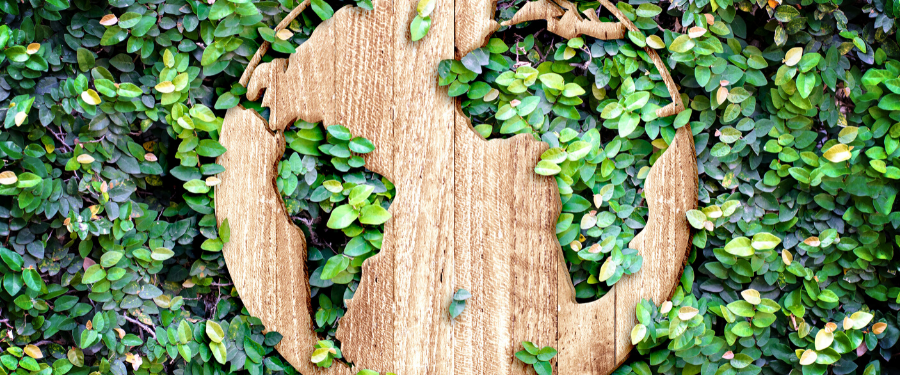Continuing with our sustainability discussion from our last post, it is important to understand a Life Cycle Assessment or Analysis (LCA) and to incorporate it into your decision making when considering environmental factors whilst sourcing. It provides you with a measured and scientific approach that trumps any perception or false claims brands or products may be making.

The benefit of using LCA methodology is that it enables the specifier to have a better understanding of all the environmental impacts and not just one aspect in isolation.
LCA is a method to measure and evaluate the environmental impacts associated with a product, system or activity, by assessing the energy and materials used and released to the environment over the life cycle.
THIS IS POLYFLOR’S SIX STEPS TO AN LCA:
Step 1
Responsible Sourcing:
Polyflor floor coverings contain a combination of ingredients which are clean, REACH compliant, natural and recycled for a more sustainable product. The materials we use in our flooring are responsibly sourced and audited for BES 6001 certification. Our local Vinyl Dot certification is testament to that.
Step 2
Protecting Resources:
Our flooring is manufactured with minimal environmental impact. It has a low carbon footprint, as the manufacturing process is energy efficient. The “3 Rs” have been stringently implemented and ensures continuously reducing, recycling and reusing resources. Our use of renewable energy has also increased dramatically.
Step 3
Reducing Footprint:
We are responsible within the supply chain and our floor coverings are distributed throughout the world via an efficient distribution network. We recognise social and environmental impacts of all transportation and therefore adopt appropriate strategies to minimise our carbon footprint.
Step 4
Installation: Sustainable Fit:
Polyflor is reducing environmental impacts associated with installation through healthier adhesives, adhesive-free installation and by promoting correct installation for a long-lasting, well performing vinyl floor covering.
Step 5
Zero Compromise:
Accounting for at least 80% of our flooring’s environmental impact, the in-use phase is an important element of the life cycle, given the potential 20 to 25-year lifespan. By providing low maintenance and low VOC benefits, our floor coverings are fit for purpose without compromising the environment.
Step 6
Recycling:
Closing the loop: In the UK, we have been recycling our post-production waste vinyl since the 1950s and now collect and recycle post-consumer waste vinyl too. Many of our floor coverings can be reused, but if not, they are all 100% recyclable through various recycling programmes.
Find out more about how vinyl flooring can be a sustainable choice, in our previous blog post, Vinyl: An Eco-conscious choice?
If you would like to know more about vinyl flooring sustainability, read our eBook Is Vinyl Flooring Sustainable? to discover how the triple bottom line applies to vinyl flooring.

For more insights like these sign up for Polyflor Insights and we will send useful tips and advice straight to your inbox.
